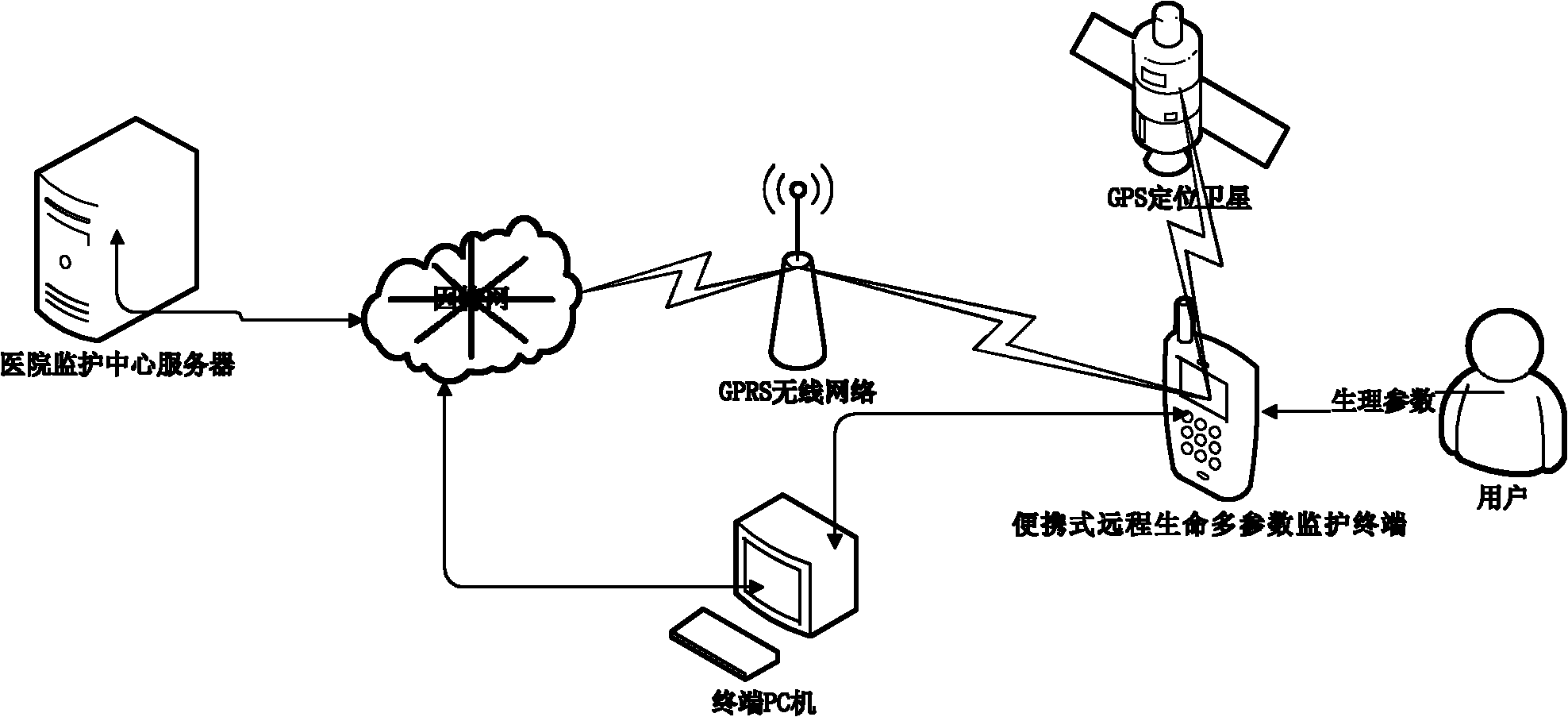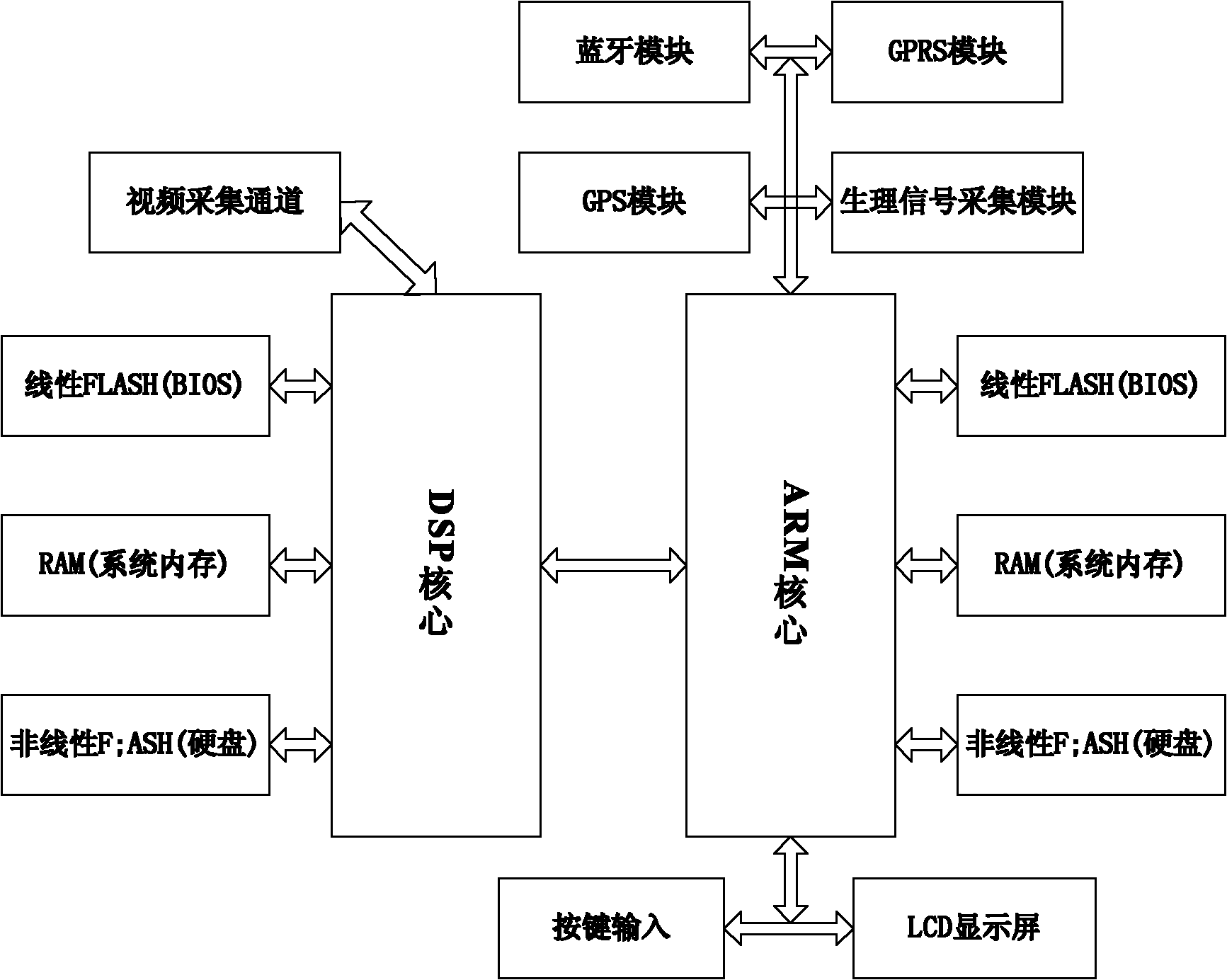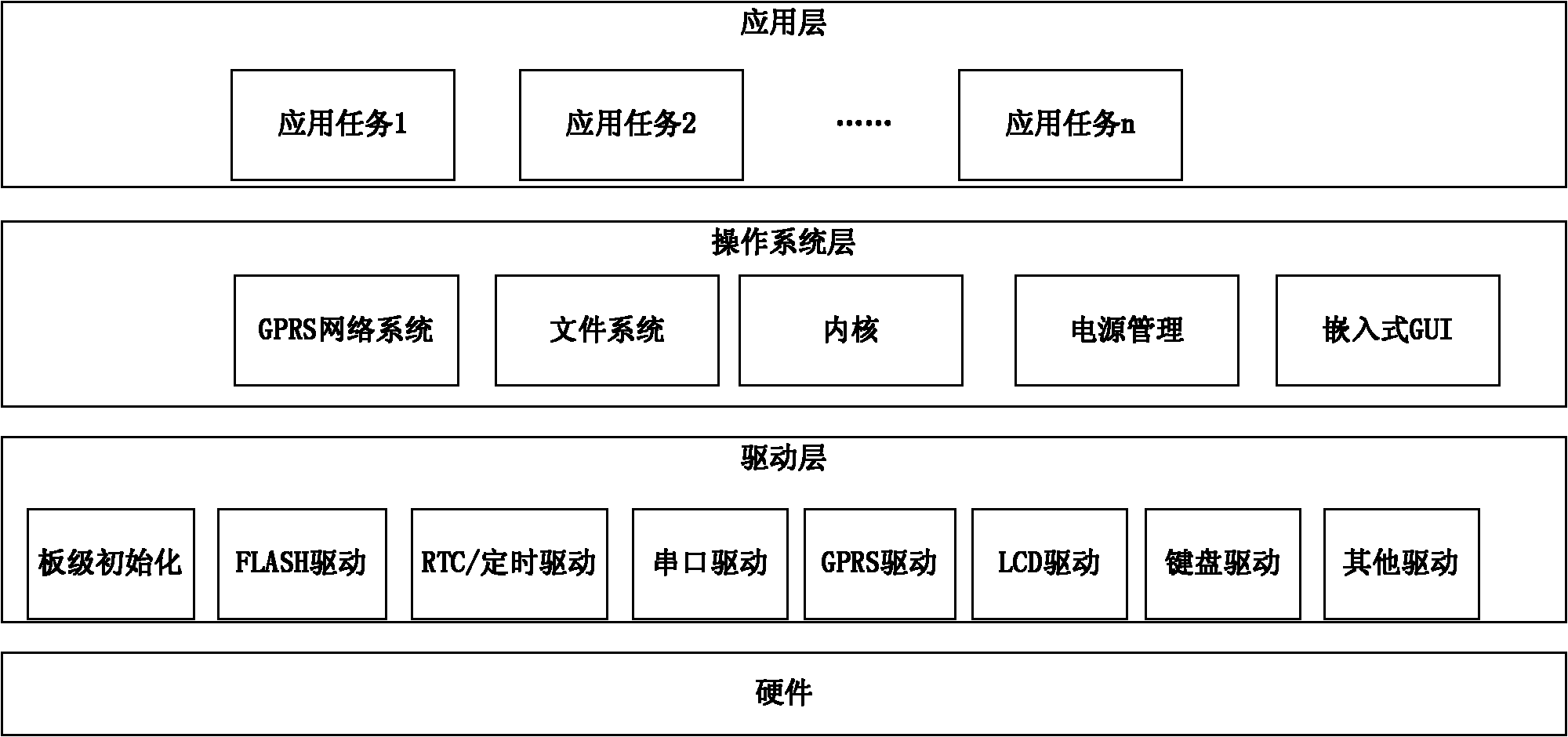Portable remote life multi-parameter monitoring terminal and constructed remote monitoring system
A portable, multi-parameter technology, applied in the field of telemedicine, can solve the problems of slow response, no diagnostic function, reliability and stability to be improved, etc., to achieve the effect of reducing workload
- Summary
- Abstract
- Description
- Claims
- Application Information
AI Technical Summary
Problems solved by technology
Method used
Image
Examples
Embodiment
[0039] Such as figure 1 It is a remote monitoring system, including a portable remote life multi-parameter monitoring terminal, a hospital monitoring center server, a terminal PC and a GPS positioning satellite. The network is connected to the INTERNET network, and communicates with the hospital monitoring center server to transmit data through the INTERNET network. The terminal PC is connected to the INTERNET network to communicate with the hospital monitoring center server to transmit data, and communicate with the portable remote life multi-parameter monitoring terminal through USB. After the portable remote life multi-parameter monitoring terminal locates the geographic location of the portable remote life multi-parameter monitoring terminal by communicating with the GPS positioning satellite through the GPS module, it transmits the geographic location information to the hospital monitoring center server.
[0040] According to the working principle of the portable remote ...
PUM
 Login to View More
Login to View More Abstract
Description
Claims
Application Information
 Login to View More
Login to View More - R&D
- Intellectual Property
- Life Sciences
- Materials
- Tech Scout
- Unparalleled Data Quality
- Higher Quality Content
- 60% Fewer Hallucinations
Browse by: Latest US Patents, China's latest patents, Technical Efficacy Thesaurus, Application Domain, Technology Topic, Popular Technical Reports.
© 2025 PatSnap. All rights reserved.Legal|Privacy policy|Modern Slavery Act Transparency Statement|Sitemap|About US| Contact US: help@patsnap.com



